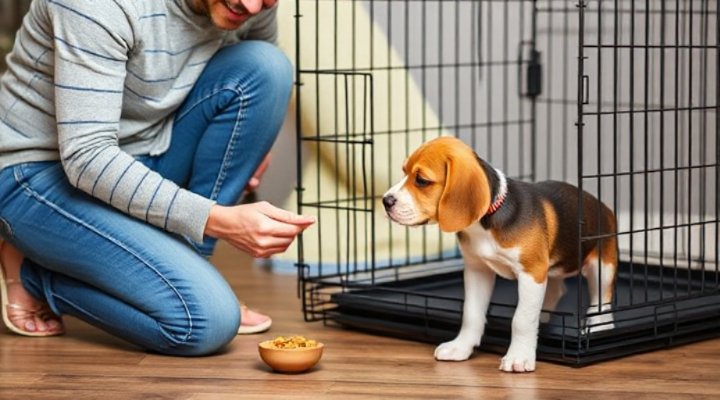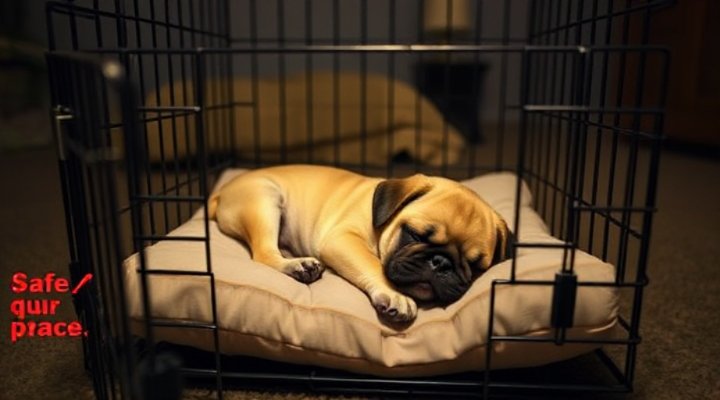When it comes to puppy training, selecting the best crate for puppy training success is one of the most important decisions you’ll make. A proper crate serves as a safe haven for your pup while helping with housebreaking, preventing destructive behaviors, and establishing routines. In other words, it’s not just a box – it’s a powerful training tool that, when used correctly, can set the foundation for a well-behaved adult dog.

Why Crate Training Matters for Puppy Development
First and foremost, dogs are den animals by nature. That is to say, they instinctively seek out small, enclosed spaces that make them feel secure. A properly introduced crate taps into this natural instinct, providing your puppy with:
- A safe space to retreat when overwhelmed
- Protection from household hazards when unsupervised
- Help with bladder control during housebreaking
- Structure that reduces anxiety and destructive behaviors
For instance, when I first brought home my Labrador puppy, Max, the crate became his sanctuary during thunderstorms. Most importantly, it prevented the chewing incidents that often happen when puppies are left alone. If you’re considering professional training classes, starting with crate training at home will give your pup a head start.

Choosing the Best Crate for Your Puppy’s Needs
Not all crates are created equal. Consequently, you’ll want to consider several factors when selecting the best crate for puppy training success:
1. Size Matters: The Goldilocks Principle
The crate should be large enough for your puppy to stand, turn around, and lie down comfortably – but no bigger. Otherwise, they might use one end as a bathroom. As your puppy grows, you may need to adjust the size or invest in an adjustable crate.
2. Material Options: Wire vs. Plastic vs. Soft-Sided
- Wire crates: Excellent ventilation and visibility, often collapsible
- Plastic crates: More den-like feel, airline approved
- Soft-sided crates: Lightweight and portable, but less durable
Meanwhile, for puppies who will eventually become therapy dogs, early positive crate experiences are especially important for future public access training.

Introducing the Crate: Making It a Positive Experience
Above all, the key to puppy training crate success is making it a happy place. Here’s how we did it with Max:
- Start with the door open and scatter treats inside
- Feed meals near, then inside the crate
- Use a command like “kennel up” consistently
- Never use the crate for punishment
Similarly, pairing crate time with basic obedience training creates positive associations. Remember, patience is crucial – some puppies adapt immediately while others need weeks.

Crate Training Schedule: Building Up Gradually
Furthermore, establishing a routine is essential for dog crate training success. Below is a sample schedule we found effective:
| Time | Activity |
|---|---|
| Morning | Potty break, then breakfast in crate |
| Mid-morning | Short training session, then crate nap |
| Afternoon | Playtime, potty break, crate with chew toy |
| Evening | Dinner in crate, followed by family time |
Subsequently, as your puppy matures, you can gradually increase crate time. For puppies showing signs of separation anxiety, the crate becomes an even more valuable tool when introduced properly.

Troubleshooting Common Crate Training Challenges
On the other hand, some puppies resist crate training initially. Here are solutions to common issues:
Whining or Barking
Ensure needs are met (potty, exercise), then wait for quiet before releasing. Never reward noise by letting them out.
Accidents in the Crate
This often indicates the crate is too large, the puppy was left too long, or needs more potty training reinforcement.
Chewing the Crate
Provide appropriate chew toys and consider a more durable material. Sometimes it signals boredom or anxiety.
In conclusion, finding the best crate for puppy training success and using it properly can transform your training journey. To sum up, the right crate becomes your puppy’s bedroom, not a prison – a place they choose to go for comfort and security. With patience and consistency, you’ll soon have a happy, well-adjusted companion who sees their crate as a safe haven.
Related Keywords: puppy training crate, dog crate training, best dog crates, puppy skill building, crate training tips, housebreaking puppies, puppy anxiety solutions
